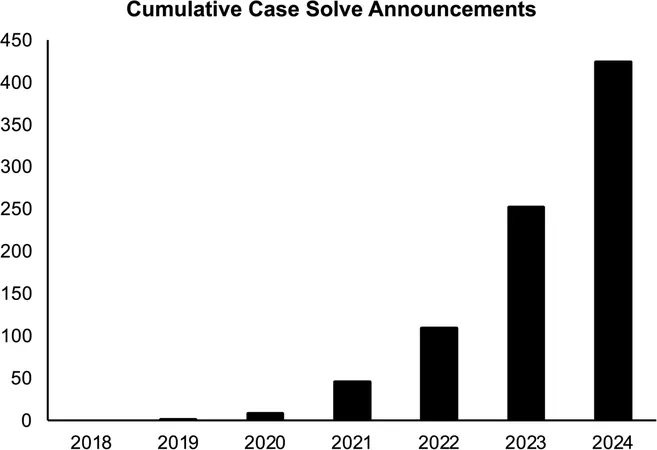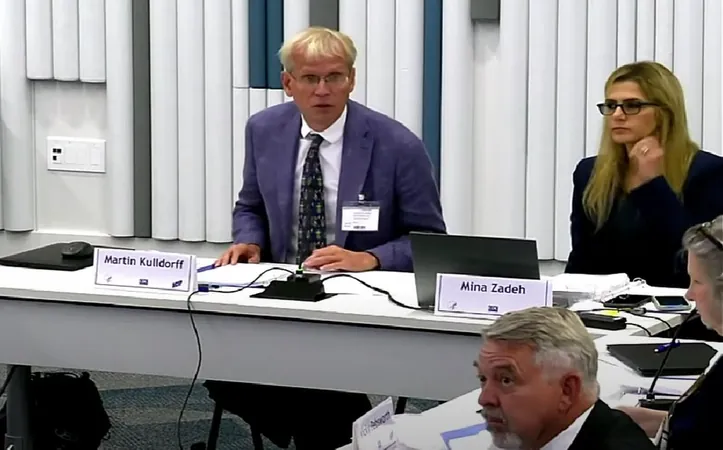
Revolutionizing Justice: How Genomics is Transforming Forensic Science
2025-09-22
Author: William
A Gamechanger in Forensic Science
For decades, genomics and forensic science have traveled separate paths. Genomics focused on understanding genetic variations and diseases through ambitious projects like the Human Genome Project. Forensic science, on the other hand, employed a narrower approach, relying on specific short tandem repeats (STRs) for identity verification. While effective in direct comparison scenarios, this method has limitations, often leaving families without answers and cases unresolved.
The Power of SNP Testing
Enter dense single nucleotide polymorphism (SNP) testing, an innovative force in forensic investigations. Unlike STR profiling, which examines a limited set of genetic markers, SNP testing offers a treasure trove of data with hundreds of thousands of markers. This method dramatically enhances the ability to analyze biological evidence, providing leads that STR typing simply cannot match, especially in cases with degraded samples. It’s a breakthrough for analyzing DNA that is too damaged or incomplete for traditional methods.
Beyond Basic Family Ties
STR searches typically work only for immediate kin relationships like parents and siblings. But SNPs elevate forensic genetic genealogy (FGG) by connecting distant relatives across generations, opening new avenues for solving crimes. Investigators can uncover familial ties that may lead to identifying unknown suspects or remains, effectively creating a family tree that points to potential ancestors linked to crime scenes.
A Roadmap to Ancestry Insights
SNP testing doesn’t just identify individuals—it can reveal rich biogeographical ancestry. This means that alongside identifying suspects, investigators can narrow down communities where unidentified persons may belong, complementing traditional anthropological techniques. Ancestry inference can illuminate pathways that conventional methods overlook, helping law enforcement target specific neighborhoods in outreach efforts.
The Evolution of DNA Phenotyping
Forensic DNA phenotyping is another area where SNP testing shines, allowing predictions about physical traits such as eye and hair color. This emerging field can generate critical leads when conventional identifying methods fail, extending the benefits of SNP testing even further.
Why Forensic Genetic Genealogy Matters
FGG has accelerated the integration of massively parallel sequencing (MPS) into forensic science. By combining SNP profiling with genealogical databases, FGG has solved numerous cold cases, revolutionizing how law enforcement approaches unsolved violent crimes. The rise in case resolutions highlights not just its effectiveness but also the growing acceptance of genomics in criminal investigations.
From Ancient DNA to Modern Justice
Dealing with degraded DNA remains a challenge in forensics, but advancements in ancient DNA techniques provide hopeful solutions. Nobel laureate Svante Pääbo's research has paved the way for extracting viable DNA from aged samples, which is now being applied in forensic contexts to recover critical evidence from challenging circumstances.
The Future of Forensic Applications
The union of genomics and forensic science opens doors to more effective methodologies. Efforts in genomic research on ethics can guide responsible usage of genetic information in policing. As costs for sequencing dwindle, questions shift from mere cost to cost-effectiveness. The majority of profiles in DNA databases remain unattached to individuals, leaving countless cases unresolved.
Scaling Up to Solve Cases
Can we tackle the backlog of unsolved cases and unidentified remains? Yes! High-throughput genomic sequencing can be automated to solve complex forensic problems more efficiently than traditional STR methods allow. Automation enables faster results, focusing resources on cases that matter most, and breaking down complex family ties in impressive new ways.
The Broader Impact of Forensic Genomics
The interplay between genomics and forensics can profoundly reshape lives. Each solved case has ripple effects, providing relief to survivors, closure for families, and justice for victims while also potentially exonerating the wrongfully accused. Despite the daunting number of unsolved cases, leveraging genomic advancements could mean a future where no case is left unresolved—a powerful vision for reducing the trauma surrounding violent crimes.









 Brasil (PT)
Brasil (PT)
 Canada (EN)
Canada (EN)
 Chile (ES)
Chile (ES)
 Česko (CS)
Česko (CS)
 대한민국 (KO)
대한민국 (KO)
 España (ES)
España (ES)
 France (FR)
France (FR)
 Hong Kong (EN)
Hong Kong (EN)
 Italia (IT)
Italia (IT)
 日本 (JA)
日本 (JA)
 Magyarország (HU)
Magyarország (HU)
 Norge (NO)
Norge (NO)
 Polska (PL)
Polska (PL)
 Schweiz (DE)
Schweiz (DE)
 Singapore (EN)
Singapore (EN)
 Sverige (SV)
Sverige (SV)
 Suomi (FI)
Suomi (FI)
 Türkiye (TR)
Türkiye (TR)
 الإمارات العربية المتحدة (AR)
الإمارات العربية المتحدة (AR)